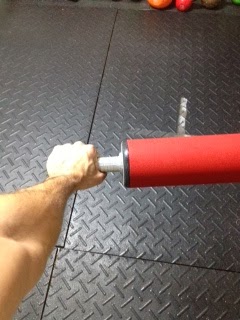Total Knee Replacement Goals
Following a Total Knee Replacement surgery, one of your long term goals is to regain full range of motion of your operative knee. However, one of your immediate goals is to regain full knee extension range of motion. Initially, knee extension is even more of a priority than knee flexion range of motion. This is why you are repeatedly told not to place a pillow under your knee when you are lying down. Most of my patients say they are very comfortable when lying in bed with a pillow under their knees. But this is a "no-no." The best you can do is place a pillow under your calf and ankle so that there is a space under the knee. This will create gravity-assisted knee extension. The absolute only time you can place a towel roll or pillow under your knee is if you are performing TKEs or Terminal Knee Extension exercises.
 Here, you place a towel under your knee joint so that you can contract the quadriceps muscles which will fully extend your knee. The last few degrees of knee extension (aka TKE) is the toughest to regain.
Here, you place a towel under your knee joint so that you can contract the quadriceps muscles which will fully extend your knee. The last few degrees of knee extension (aka TKE) is the toughest to regain. Click Total Knee Replacement for the full Physical Therapy Video Protocol and follow along workout.











































